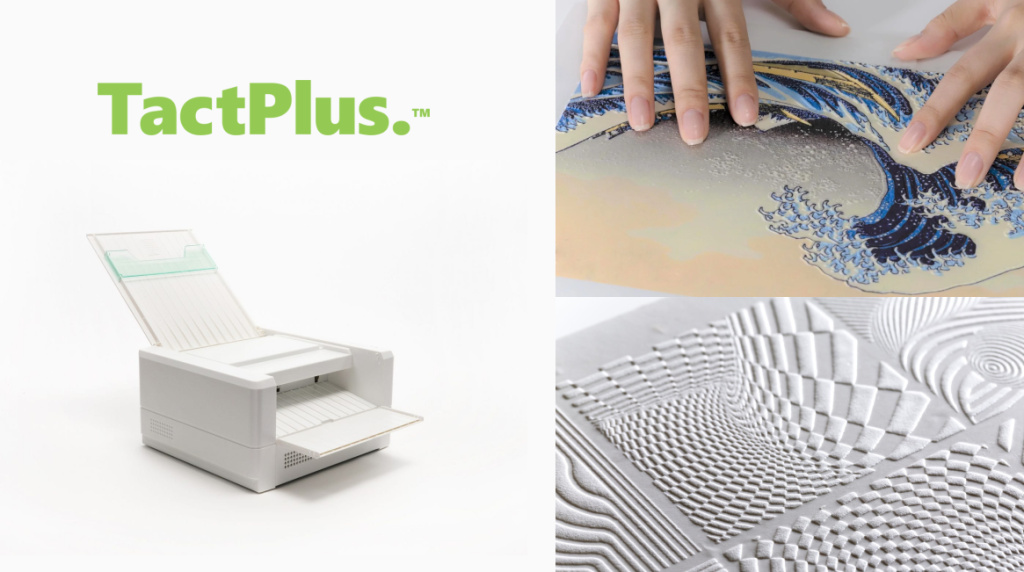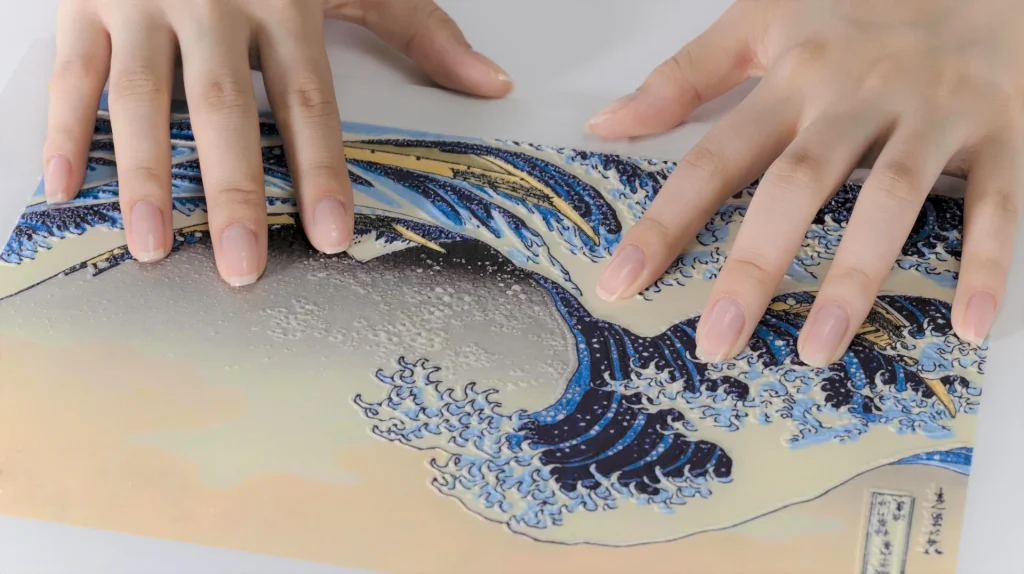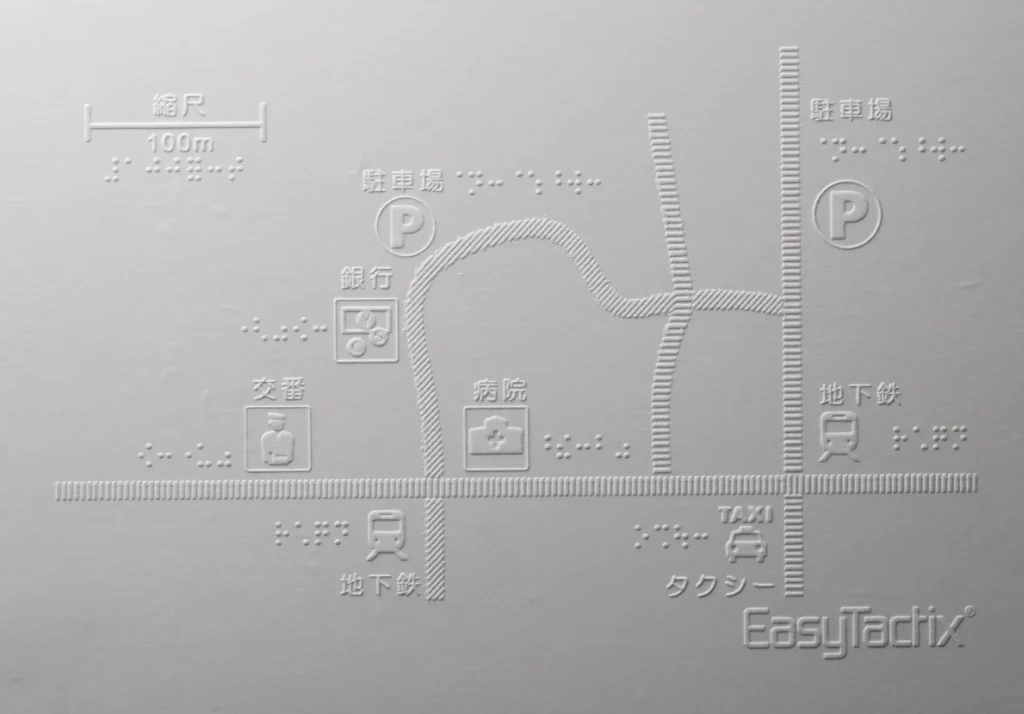TactPlus is a Braille and 3D imaging printer designed to enhance accessibility for individuals with visual disabilities. Compact and portable, it prints Braille on specialty paper in under two minutes. With audio instructions and a price of $1,400, TactPlus offers an affordable and efficient solution for educational institutions and users on the go.
Key Accessibility Features of TactPlus
- Braille Printing and 3D Imaging
TactPlus enables Braille printing on its own or overlaid on ink printed content, providing utility to individuals who have low vision or blindness to access visual materials like images, graphs, and maps—content that is often inaccessible in a world where new technologies are creating more and more visual experiences. This feature aligns with the social model of disability, advocating for inclusive design and equal access to visual information. It also supports the economic model of disability, broadening access to art and design, and enhancing overall usability. - Sound Guidance
The TactPlus includes audio instructions to assist users with visual disabilities. While this is a helpful feature, there may still be a learning curve for new users who are unfamiliar with Braille printers or tactile imaging technology. Some users may find the interface or the setup process complicated, and those without prior experience may require additional training or support to fully utilize the device. This affects the usability and utility of the product, as the initial user experience may be challenging for some. - Lightweight and Portable
The TactPlus is compact and weighs around 5kg, making it portable and easy to carry around. This makes it convenient for individuals who need to print Braille materials on the go. For instance, users can easily print maps for navigation, enhancing their independence in daily life. However, its portability is somewhat limited by the need for a connected computer or device to generate content, meaning that the printer is not fully standalone. This requirement may pose a challenge for users looking for complete mobility in more remote or on-the-go situations. The viability of the TactPlus as a fully portable solution could be improved with further development in this area. - Integrated Software
The TactPlus also boasts integrated software that allows users to seamlessly convert data from common applications like Microsoft Word directly into Braille. This feature promotes the universal design model, allowing people with varying abilities to access the same content with minimal effort. It also ties into the social model of disability, ensuring that people with visual disabilities can easily access information typically taken for granted by sighted individuals. The product’s compatibility with widely-used applications enhances its accessibility, allowing users to integrate it more easily into their daily routines.
Potential Limitations
While the TactPlus offers many advantages, there are also some limitations to consider:
- Learning Curve and Support Needs
Despite its audio guidance, users may still face a learning curve, especially those new to Braille printers. The process of setting up the printer, navigating its functions, and troubleshooting any issues might require support or guidance – directly affecting the usability and utility of the product. Institutions may need to provide additional training or resources to ensure that users can maximize the benefits of the device. - Portability Limitations
While the printer itself is portable, its dependence on external devices such as computers and necessary ports means it is not truly mobile. In situations where users need to print materials without immediate access to a computer or other hardware, the TactPlus may be less practical than other portable solutions. This impacts the affordability of the device, since users may need to invest in additional hardware to make it fully functional in all scenarios. - Adoption and Market Reach
Despite its promising features, TactPlus has not seen widespread adoption. This may be due in part to the lack of user-centric communication in its marketing, which focuses more on the technology rather than the users it aims to serve. Additionally, a product initially launched in Japan, that was launched in the US in 2019, TactPlus may still be working to establish its presence and build awareness in the market. Furthermore, the website’s tone and messaging can sometimes come across as more functional and institutional, rather than being framed around the user (operator) or end user (person with visual disabilities). To truly resonate with the broader market, TactPlus could shift its messaging to focus more on the users’ needs and experiences, thus appealing more to the people-first narrative.

Screenshot taken from: https://www.tactplusprinter.com/
Conclusion
Overall, the TactPlus Braille and 3D imaging printer offers significant improvements in accessibility for individuals with visual disabilities. Its portability, affordability, and features such as sound guidance and integrated software align with the social model of disability, promoting greater independence and access to visual content.
However, the product’s communication tends to focus more on its technical features than the users it serves. This can make it appear more aligned with a functional model. Emphasizing the device’s function for institutions and family members while also empowering individuals with visual disabilities would shift it towards the social model. It can also inadvertently come across as a charity model, where the product is framed as a solution for the “impaired” (referenced directly from the website) rather than as a tool for empowerment.
To better align with the market model of disability, TactPlus could refocus its messaging to emphasize economic empowerment and personal agency, highlighting how the printer enables users to take control of their own lives and navigate the world independently. By doing so, TactPlus could make a stronger impact by appealing directly to individuals with visual disabilities while still supporting institutional use.
With refined communication and ongoing product development, TactPlus has the potential to strike a balance between functional accessibility and true user empowerment, positioning itself as both a tool for inclusion and a model for self-determination.



